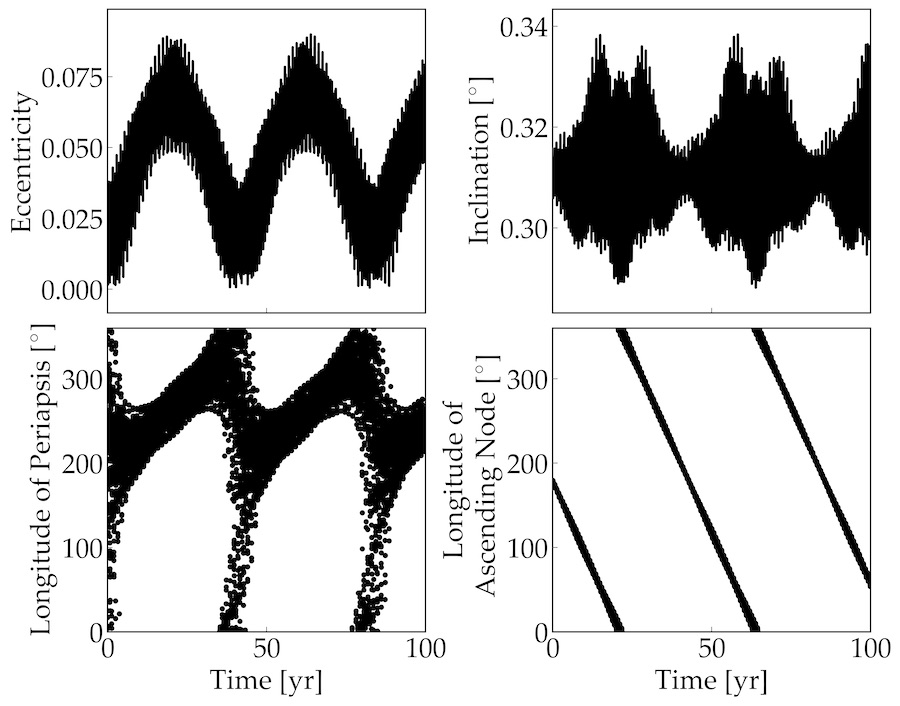Planetary systems evolve due to a myriad of processes, often non-linearly, which
complicates simulating exoplanetary systems. The relevant physical processes have often
been modeled and explored within disparate fields of science, so a universal model of
planetary system evolution must unite theories developed in multiple scientific
disciplines. vplanet is an interdisciplinary software tool
that models planetary system
evolution to self-consistently track stellar, orbital, tidal, rotational, atmospheric,
internal, magnetic, climate, and galactic evolution for generic planetary systems, but
focusing on systems with habitable worlds.
vplanet was primarily developed by one of my graduate school
advisors, Rory
Barnes. I'm the second author on the paper — I worked on the stellar
evolution
and atmospheric escape bits of the code, as well as on the plotting routines and
making it open source on GitHub. Check out the links at the top for more
information!

